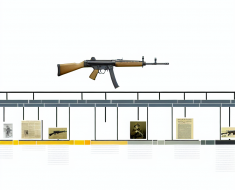Understanding Firearm Patents and Innovations

The world of firearms is not only shaped by the mechanics of shooting and ballistics but also by a rich history of patents and technological innovations. Firearm patents have been crucial in advancing weapon design, improving safety, enhancing accuracy, and increasing efficiency. This article delves deep into the landscape of firearm patents, exploring how innovation drives the industry, notable examples of patented technologies, and the broader implications for manufacturers, users, and regulators.
The Historical Context of Firearm Patents
Firearm innovation dates back centuries, with some of the earliest firearms appearing in the 14th century. However, it wasn’t until the rise of patent laws in the 18th and 19th centuries that firearm inventors began systematically protecting their inventions.
Patents serve as legal documents granting inventors exclusive rights to their creations for a specified period. In the case of firearms, this has meant securing ownership over designs that revolutionize loading mechanisms, firing systems, safety features, and even aesthetics.
For example:
- Samuel Colt’s Revolver (1836): Colt’s patent on the revolving cylinder mechanism transformed handgun design by allowing multiple rounds to be fired without reloading after every shot. This invention helped establish modern revolvers as a standard in both military and civilian use.
- John Moses Browning’s Innovations: Browning is credited with numerous patents that influenced nearly every type of firearm. His designs for semi-automatic pistols (like the M1911), machine guns (the M2 .50 caliber), and shotguns remain foundational in firearm technology today.
These early patents laid the groundwork for modern firearms engineering and demonstrate how intellectual property protection can drive technological progress.
Key Areas of Innovation in Firearm Patents
Modern firearm patents span a wide range of technological improvements. These innovations often focus on enhancing performance, safety, ergonomics, or manufacturing processes. Below are some critical categories where patents have made significant impacts:
- Firing Mechanisms: Innovations include improvements in trigger systems, striker-fired designs versus hammer-fired mechanisms, and electronic firing controls that increase precision or reduce recoil.
- Ammunition Feeding Systems: From detachable magazines to belt-fed systems in machine guns, inventors have patented numerous feeding mechanisms aimed at improving reliability and rate of fire.
- Safety Features: Modern firearms incorporate multiple patented safety devices such as drop safeties, grip safeties (as seen in the M1911 pistol), trigger safeties (Glock pistols), and manual safeties to prevent accidental discharge.
- Materials & Manufacturing Techniques: Advancements include use of polymers (e.g., Glock’s polymer frame), corrosion-resistant coatings, modular construction techniques for ease of customization or repair.
- Sighting & Optics Integration: Patents cover integrated sight rails (Picatinny rails), adjustable iron sights, and electronic/red dot sight mounts designed to improve target acquisition speed and accuracy.
Each area reflects ongoing efforts by designers to solve practical problems faced by shooters — whether military personnel or civilian enthusiasts — through technological innovation protected under patent law.
Notable Case Studies in Firearm Patent Innovations
An understanding of firearm patents is enriched by examining landmark examples where patented innovations have had a profound impact on gun technology and usage patterns worldwide.
The Glock Pistol: Polymer Frame Revolution
The introduction of Glock pistols in the early 1980s marked a paradigm shift due largely to its patented polymer frame design. Traditional pistols used metal frames which were heavier and more susceptible to corrosion. Glock’s innovation reduced weight significantly while maintaining durability — a competitive advantage that propelled its adoption by law enforcement agencies globally.
The Glock’s Safe Action System also incorporated three internal safeties under patent protection, contributing to its reputation for reliability combined with user safety. Today, Glock holds hundreds of patents covering various aspects from frame design to magazine construction.
The AR-15 Platform: Modular Design Patents
The AR-15 rifle platform pioneered modular firearm design concepts protected through multiple patents. Originally developed by Eugene Stoner in the late 1950s, this rifle’s design allows users to easily swap barrels, stocks, handguards, and calibers — creating immense versatility for different applications such as hunting or tactical scenarios.
This modularity has spurred countless derivative models worldwide. Many manufacturers hold patents on specific components like ambidextrous controls or improved buffer systems that optimize recoil management within AR-type rifles.
Cased Telescoped Ammunition: A Future-Facing Innovation
A newer area attracting patent activity is cased telescoped ammunition technology — where rounds are encased entirely within polymer cases rather than traditional brass or steel. This innovation reduces ammunition weight dramatically while maintaining ballistic performance.
The US Army’s Next Generation Squad Weapon program has invested heavily into this tech with contracts awarded to firms holding related patents. If widely adopted, it could redefine infantry weaponry logistics by easing load burdens on soldiers without sacrificing firepower effectiveness.
The Patent Process Specific to Firearms
The process of obtaining firearm-related patents follows general intellectual property law but involves unique considerations given the nature of firearms as regulated products.
- Prior Art Searches:







